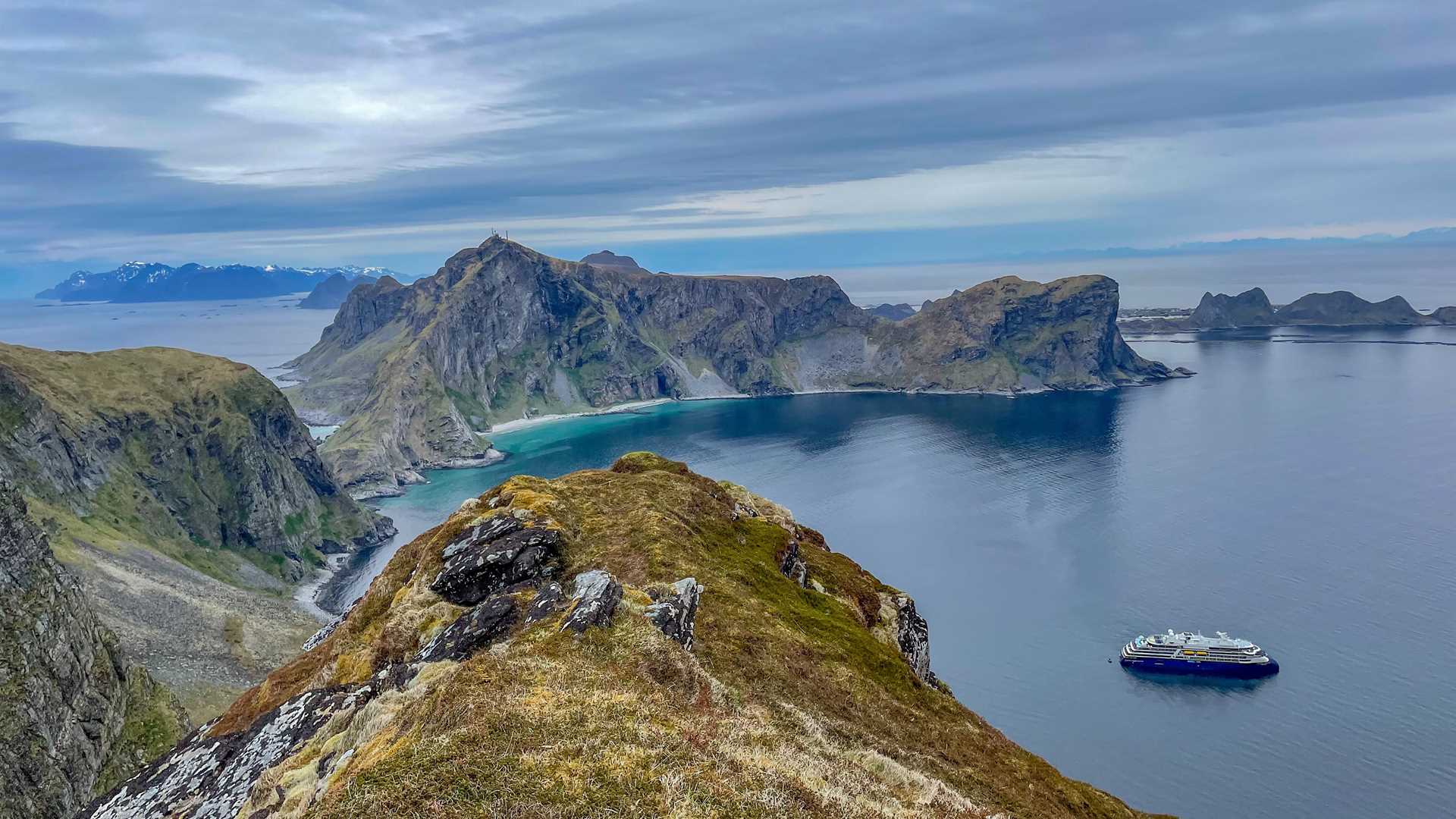Throughout the evening, we sailed north, and in the morning we woke up at Væroy Island, one of the many islands of Lofoten, Norway. The small bay we inhabited is home to Mastad, a small village that once had a population of 150 people. Now, only a dozen people use the village as a summer getaway. The island is particularly famous for the rarest of Norwegian dog breeds, the lundehund (puffin dog). This dog has six toes on each paw, making it particularly suited for climbing rocks and reaching the difficult cliff sides where puffins nest. The puffins were an important dietary staple and a source of extra income for the islanders. Væroy is also known for the former practice of catching and killing white-tailed eagles through hidey-holes to protect their sheep. This practice was discontinued in 1968 when Norway placed the eagles under protection.
In the afternoon, we moved further north to another island in the Lofoten chain, Reine. This island is well known throughout Norway for its picturesque scenery of tall mountains, red houses, and cod. Hundreds of thousands of cod are left drying on racks in the traditional method that dates back more than a thousand years. It is a stunning sight to witness, and it can be an overwhelming experience for your nose. We spent the afternoon walking among the racks and taking in the sights around town.
During another scrumptious dinner onboard, National Geographic Endurance sailed to one of the most impressive fjords in Norway–the Trollfjord. Only 100 meters wide at the entrance, the rock walls of the fjord skyrocket out of the water, creating quite a dramatic scene. Towards the back, the channel opens slightly into a calm bay. We all stood on deck soaking up the glorious view.







